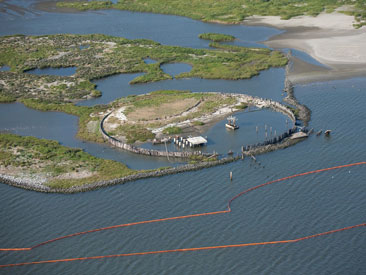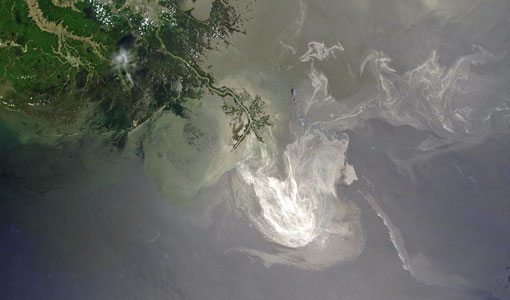 Since the explosion of the oil rig Deepwater Horizon on April 20, millions of gallons of crude oil have flowed into the Gulf of Mexico, forever changing the lives of Gulf Coast residents and causing untold environmental damage to the coastal ecosystem.
Since the explosion of the oil rig Deepwater Horizon on April 20, millions of gallons of crude oil have flowed into the Gulf of Mexico, forever changing the lives of Gulf Coast residents and causing untold environmental damage to the coastal ecosystem.
As an environmental research institution specializing in coastal environments, researchers from the University of Maryland Center for Environmental Science are playing an active role in determining long-term damage to the ecosystem and providing science-based analysis to policymakers and natural resource managers working to minimize the impact of this environmental tragedy.
A New Orleans native and former director of the Louisiana Universities Marine Consortium, UMCES President Dr. Donald Boesch is a panel member of the National Commission on the BP Deepwater Horizon Oil Spill and Offshore Drilling and is a leading expert on the effects of oil drilling on the Gulf.
Chesapeake Biological Laboratory toxicologist Dr. Carys Mitchelmore, a leading toxicologist who has researched the effects of dispersants on marine organisms, has testified before Congress on five occasions, outlining the environmental impacts of widespread dispersant use in the Gulf. She has been widely quoted in the media and has traveled to the Gulf region to meet with Federal officials and discuss the role dispersants should play in the cleanup effort.
UMCES Horn Point Laboratory Director Dr. Michael Roman and a team of scientists including faculty members Drs. Bill Boicourt and Jamie Pierson led a post-spill Gulf research cruise to collect data used to produce spatially-explicit, high-resolution maps and models to quantify hypoxia and the oil’s effects on living resources. This work, funded by the National Science Foundation, is built upon a five-year study Dr. Roman led from 2003-2008.
RELATED: Dissecting Deepwater Horizon
Horn Point Laboratory fisheries oceanographer Dr. Elizabeth North is collaborating with a team of scientists to predict the spread of subsurface oil in the Gulf of Mexico. Their work takes into account currents, winds and the size of oil droplets to track the spill’s movement so restoration teams can pinpoint the most likely locations of oil plumes below the water’s surface. The project, funded by a National Science Foundation Rapid Research grant, is based on Dr. North’s previous work modeling the movement of oyster larvae in Chesapeake Bay.
Integration and Application Network business manager Ken Barton, has temporarily returned to NOAA’s Office of Response and Restoration in support of oil spill response efforts. Prior to joining UMCES, Ken led spill response efforts for the National Oceanic and Atmospheric Administration.
Horn Point Laboratory scientist Dr. Larry Sanford is providing Gulf research colleagues with critical scientific monitoring equipment that collects data on oil droplet size which will be used to help with modeling the spread of the spill.

NASA MODIS image of the Gulf of Mexico Oil Spill on May 24, 2010.

